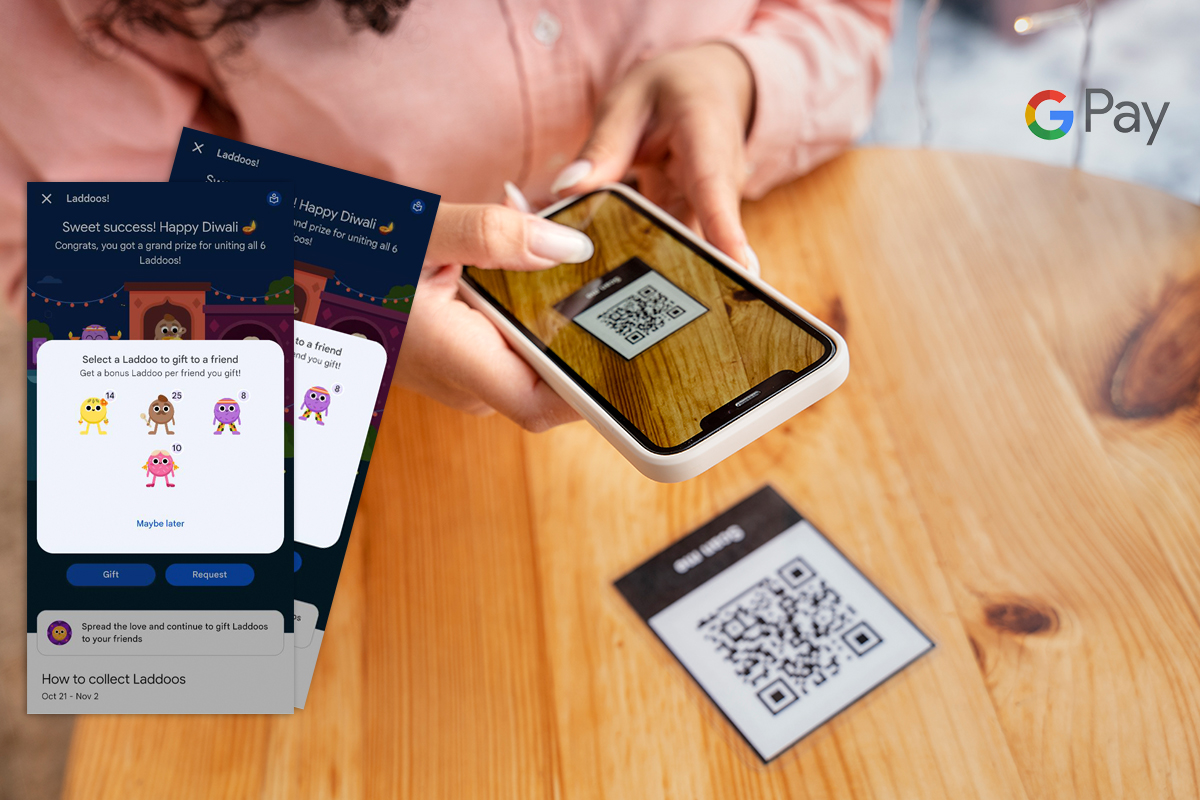GPay “Ladoo” reward is a brilliant example of psychology in UX design, especially around Diwali, a festival associated with joy, gift-giving, and rewards. This feature uses culturally relevant themes to engage users emotionally and behaviorally, combining elements of gamification, positive reinforcement, and nostalgia. Let’s break down the psychological strategies at play here and how they enhance the user experience.
- Leveraging Cultural Relevance
In Indian culture, ladoos are often associated with celebrations and good fortune, making them perfect symbols for a reward during Diwali. GPay taps into this cultural meaning, which evokes positive emotions and adds a sense of festivity.
Diwali is a time of giving and receiving gifts, so the ladoo rewards feel in sync with the user’s expectations of the holiday, creating a seamless experience that resonates with users on a cultural level. - Gamification and Motivation
GPay uses challenges to keep users engaged, like collecting a certain number of ladoos to earn cash rewards. This turns routine transactions into an exciting game, where each transaction feels like a step towards a potential reward.
Each ladoo earned reinforces positive behavior, encouraging users to continue using GPay for payments. This repetitive reward system encourages loyalty by associating frequent usage with festive gains. - Nostalgia and Familiarity
Many Indians associate ladoos with family gatherings and celebrations. By using a ladoo, GPay subtly taps into these cherished memories, creating a comforting and familiar experience.
This touch of nostalgia builds a personal connection with the app, increasing user affinity and emotional attachment. - Social Influence and FOMO
Users are encouraged to share their rewards and achievements on social media, showing off the ladoos they’ve collected. This taps into social influence and FOMO (Fear of Missing Out), prompting other users to join in to avoid being left out of the reward loop.
Seeing friends and family participate in the ladoo rewards program increases the user’s motivation to also participate, reinforcing usage through social dynamics. - Unpredictability and Anticipation
Not knowing what reward you’ll get after a transaction adds an element of surprise, keeping users engaged with anticipation. Variable rewards are known to be highly addictive, as users crave the excitement of discovering what’s next.
The potential for unexpected rewards after each transaction makes the process more enjoyable and makes users more likely to continue using GPay as they anticipate the next reward.
UX Takeaways for Similar Campaigns
GPay’s ladoo reward program is a great case study in using psychological principles to create an engaging and culturally resonant UX.
Here’s how designers can leverage similar techniques:
:: Incorporate Cultural Symbols:
Use culturally relevant symbols to resonate with the target audience during festivals.
:: Gamify User Interactions:
Simple tasks and rewards can make routine actions more engaging and help build habits.
:: Add Elements of Surprise:
Use variable rewards to keep users engaged over time.
:: Encourage Social Sharing:
Design shareable experiences to drive engagement through social influence.
The GPay ladoo reward is a smartly crafted UX strategy, combining the excitement of Diwali with user engagement tactics to foster both loyalty and joy.




Leave a Reply